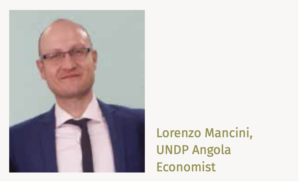
Search
‘The Municipal MPI in Angola is a Key Tool for the SDGs at the National and Local Levels’

What has been the role of UNDP in the development of the M-MPI? How did the collaboration materialize?
In Angola, UNDP has established a solid and fruitful partnership with the National Institute of Statistics (INE), which has led to key results such as the first of Angola’s SDG baseline indicators reports and technical trainings for local governments on multidimensional poverty. Based on that experience and UNDP’s mandate, the two institutions have discussed how to contribute to SDG 1 by focusing more on multidimensional poverty. UNDP provided technical and financial assistance to INE to launch a public consultation with multiple stakeholders to seek feedback on the indicators to be included in the national MPI. To achieve this goal, the global partnership between UNDP and OPHI was vital. UNDP supported several visits by OPHI to Angola to set up a joint technical team ‒ composed of INE, UNDP, and OPHI. This team has worked very in- tensely to develop the M-MPI based on data from the 2014 population census. UNDP and INE have also joined forces to engage line ministries and lo- cal governments during the creation of the M-MPI. UNDP has also supported the official launch of the report, which was presented in the city of Ondjiva, with the participation of the government of Cunene province.
‘The M-MPI had a very positive impact on the national dialogue on multidimensional poverty in Angola.’

What are the advantages of the M-MPI as a policy tool in Angola?
The M-MPI had a very positive impact on the national dialogue on multidimensional poverty in Angola. The M-MPI constitutes a powerful policy tool as it is the only measure available in Angola to understand the incidence and intensity of multidimensional poverty across all the 164 municipalities of Angola. The disaggregation at the municipal level represents the strong advantage of using the M-MPI to see, within a specific municipality, the contribution of each indicator to multidimensional poverty. This may also contribute to the local implementation of the National Development Plan 2018–2022, including the establishment of the first-ever elected local governments in Angola. Finally, it is noteworthy that Angola’s M-MPI has contributed to defining the baseline for SDG target 1.2, which is related to the proportion of men, women, and children of all ages living in poverty in all its dimensions accord- ing to national definitions.
What is the relevance of adopting the MPI in Africa?
Adopting the Multidimensional Poverty Index (MPI) in Africa is key to contributing to the implementation of the 2030 Agenda for Sustainable Development and the SDGs. The global MPI 2019 shows that, on average, one in two people (57.5%) in sub-Saharan Africa live in multidimensional poverty, which corresponds to about 538 million people. Deprivations in health, education, and standard of living continue to affect large shares of the population in different forms across Africa. For example, the global MPI 2019 shows that millions of people in sub-Saharan Africa continue to suffer from simultaneous deprivations in access to electricity, drinking water, and sanitation. The global MPI allows policy actors to identify these overlapping deprivations and see precisely how they affect people.
Adopting the MPI in Africa is also a key tool for understanding multidimensional poverty at the local level and inequalities across regions. For example, the global MPI 2019 revealed that in sub-Saharan Africa the incidence of poverty varies significantly across countries ‒ for example, 6.3% in South Africa and 91.9% in South Sudan ‒ but also within countries ‒ in Angola, the incidence of global MPI in Luanda is 16.0%, whereas in Bie it is 80.8%.
The adoption of national MPIs in Africa may sup- port the design and implementation of policy programmes that consider the interlinkages across different sectors, which is in line with the 2030 Agenda. It is noteworthy that, on 22 January 2020, the UN Secretary-General launched the ‘Decade of Action’, which calls for accelerating sustainable solutions to deliver the 2030 Agenda and the SDGs.
This article was published in Dimensions 9
















